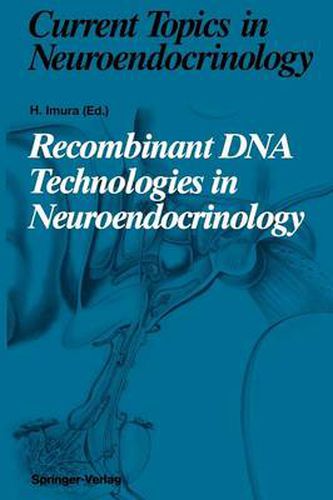Readings Newsletter
Become a Readings Member to make your shopping experience even easier.
Sign in or sign up for free!
You’re not far away from qualifying for FREE standard shipping within Australia
You’ve qualified for FREE standard shipping within Australia
The cart is loading…






This title is printed to order. This book may have been self-published. If so, we cannot guarantee the quality of the content. In the main most books will have gone through the editing process however some may not. We therefore suggest that you be aware of this before ordering this book. If in doubt check either the author or publisher’s details as we are unable to accept any returns unless they are faulty. Please contact us if you have any questions.
1.1 Mechanism of Action of Glucocorticoid Hormones The current model of glucocorticoid hormone action is summarized in Fig. 1. After synthesis, glucocorticoids are secreted into the blood stream and trans- ported to target cells where they bind with high affinity (K-1O-9M) and d specificity to the intracellular glucocorticoid receptor (GR) protein. The sub- cellular localization of hormone-free GR is still a controversial issue. However, most data support the idea that unliganded GR is in the cytoplasmic compartment or loosely associated with the nucleus (Picard and Yamamoto 1987; Gustafsson et al. 1987 and references therein; LaFond et al. 1988; Gasc et al. 1989). Upon ligand binding, GR is activated into a form capable of interacting with DNA. The mechanism of GR activation probably involves a conformational change and dis- sociation from nonreceptor components, e.g., the 90-kDA heat shock protein (hsp90: Pratt et al. 1988; Bresnick et al. 1989; Denis and Gustafsson 1989). The subcellular location of activated GR has been firmly established to be inside the nucleus. In vivo, the hormone-receptor complex interacts with specific DNA Activation r:::.. ~ qc [!3-GC …&.GC~ j ~ ? , BIOLOGICAL EFFECTS
t , Active Protein , , ~Vl\lent.
$9.00 standard shipping within Australia
FREE standard shipping within Australia for orders over $100.00
Express & International shipping calculated at checkout
This title is printed to order. This book may have been self-published. If so, we cannot guarantee the quality of the content. In the main most books will have gone through the editing process however some may not. We therefore suggest that you be aware of this before ordering this book. If in doubt check either the author or publisher’s details as we are unable to accept any returns unless they are faulty. Please contact us if you have any questions.
1.1 Mechanism of Action of Glucocorticoid Hormones The current model of glucocorticoid hormone action is summarized in Fig. 1. After synthesis, glucocorticoids are secreted into the blood stream and trans- ported to target cells where they bind with high affinity (K-1O-9M) and d specificity to the intracellular glucocorticoid receptor (GR) protein. The sub- cellular localization of hormone-free GR is still a controversial issue. However, most data support the idea that unliganded GR is in the cytoplasmic compartment or loosely associated with the nucleus (Picard and Yamamoto 1987; Gustafsson et al. 1987 and references therein; LaFond et al. 1988; Gasc et al. 1989). Upon ligand binding, GR is activated into a form capable of interacting with DNA. The mechanism of GR activation probably involves a conformational change and dis- sociation from nonreceptor components, e.g., the 90-kDA heat shock protein (hsp90: Pratt et al. 1988; Bresnick et al. 1989; Denis and Gustafsson 1989). The subcellular location of activated GR has been firmly established to be inside the nucleus. In vivo, the hormone-receptor complex interacts with specific DNA Activation r:::.. ~ qc [!3-GC …&.GC~ j ~ ? , BIOLOGICAL EFFECTS
t , Active Protein , , ~Vl\lent.